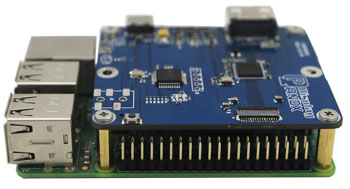
The OLED modules in tandem are independent from each other, a factor which enables greater choice in regard to material selection and matching, optimal performance from each element, and the ability to easily adjust colors.
Compared to traditional fluorescent/phosphorescent hybrid devices, tandem OLED displays don’t suffer from loss of efficiency.
Advantages of Tandem OLED
Tandem OLED technology is making waves in the display market, particularly highlighted by the 2024 Apple iPad Pro and the Honor Magic6 RSR Porsche edition. The standout feature of these devices is their ultra-high brightness, with full screen brightness reaching up to 2000 nits, surpassing any screen used in tablets and phones to date. Tandem OLED achieves this exceptional brightness while retaining the inherent advantages of OLED screens, such as the ability to turn off individual pixels for true blacks and high contrast ratios, significantly outperforming mini LED screens with point backlighting. This results in superior HDR performance and improved screen usability even in direct sunlight, making Tandem OLED an ideal choice for mobile devices like phones and tablets.

Another major advantage of Tandem OLED is its longer service life. In traditional OLED screens, brightness and lifespan are usually a trade-off. To manage this, most manufacturers limit the maximum manual brightness of OLED screens, while allowing brief increases in brightness under strong ambient light conditions—a mechanism commonly used in mobile phone displays. Tandem OLED, however, utilizes a double-layer OLED structure, where each layer operates at a lower brightness level. The combined effect is a high-brightness display that ages more slowly, resulting in a longer lifespan for the screen.
Disadvantages of Tandem OLED
Despite its advantages, Tandem OLED technology comes with significant cost implications. The need for double-layer OLED structures means higher material costs, along with the necessity of reengineering production lines, circuit designs, and drive designs. Consequently, Tandem OLED screens are substantially more expensive compared to traditional OLED screens.

Moreover, achieving consistent display quality is a challenge with Tandem OLED. For accurate picture display, both OLED layers must have identical display characteristics. However, even OLED screens produced with the same parameters and processes can vary between batches. This variability can lead to issues like color discrepancies at low brightness levels, often referred to as "green screen" or "dark and light screen" problems. To mitigate this, manufacturers must carefully select single-layer OLEDs from the same batch for Tandem OLED production, which impacts the overall yield and adds to the complexity and cost of manufacturing.
Future Outlook for Tandem OLED
Tandem OLED is poised to be the premier display technology, combining the ultra-high contrast of traditional OLED with superior brightness capabilities compared to mini LED, making it the optimal choice for HDR image display. Additionally, its longer service life due to the double-layer OLED structure further enhances its appeal. While current challenges include high costs and yield issues, it is expected that continued advancements and iterations will address these concerns. As more manufacturers invest in Tandem OLED production lines, we anticipate that these screens will become more prevalent, offering significant competitive advantages to early adopters in the market.

















